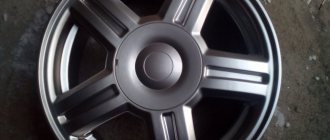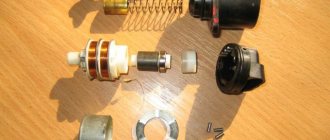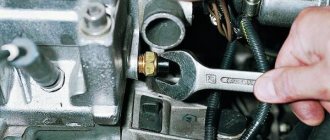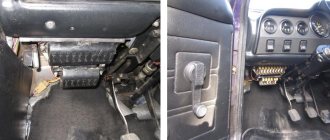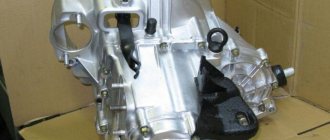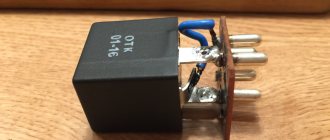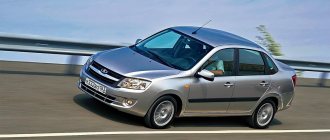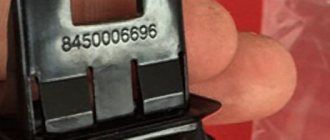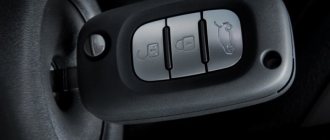How to properly configure the DVR yourself date and time
- Setting the setting language. We exhibit - Russian;
- Recording permission. Here you can configure, in addition to the resolution itself, the number of frames per second. The ideal option is Full HD 1920×1080 30p. In some cases, the manufacturer may recommend setting other indicators; Set the camera rotation. Here you can select the options rotation, top-bottom. With a standard camera installation, the “top-bottom” indicator is selected;
- Adjusting the length of the recording cycle. Most models have the ability to set time periods for one file from 1 to 45 minutes. For greater convenience, it is recommended to select a period of 5 minutes. In this case, after taking up all the space on the memory card, new segments will be recorded over the oldest recordings;
- Be sure to turn on the time function. This may be necessary if there is a need to dispute with the insurance company or another participant in the accident in court. Find the time tab, usually there is a “time stamp” mode. It should be switched to the ON position. Next, set the date and time. Some models allow you to synchronize time via satellite;
- The light frequency allows you to adjust the lighting flicker filter. In our country, lighting is used with a frequency of 50Hz, we set this value;
- Auto-record. This function allows you to turn on the camera when moving within the field of view of the sensors. This way you can control what is happening to your car while it is parked. Don't forget to set the shutdown time. It is recommended to do 30 seconds after the end of the object's movement;
- Setting up a GPS receiver. This allows you to display movement speed and coordinates on video. Please note that not all DVRs have this capability;
- Setting up the G-sensor. This is necessary to protect the recording in case of an accident or when driving on bumpy roads. When driving on poor surfaces, it is recommended to disable the function completely;
- For use in winter, it is advisable to delay the start time by 10-20 seconds. This will allow the camera to turn on only after a certain period of time after the engine starts. The function is also useful in case of ignition problems;
- Setting the exposure. It is better to choose automatic;
- We set the contrast to the “normal” position, and also do the same with sharpness and brightness;
- Day and night exposure. Automatic mode is suitable for daytime operation. Night exposure can be turned off.
- If you leave it on, the camera will independently select the exposure mode depending on the time of day.
AutoFlit.ru
Other DVR settings
The disk is formatted, the video resolution is set to maximum, the date and time are correct, the language is also set. Now let's see which additional functions should be configured and which ones should be completely disabled.
Most DVRs allow you to set a specific file size for continuous video recording. Most often, this value can range from 2, 3, 4...15 minutes. This setting can be accessed through the menu or by pressing the button labeled “Record Time” or “Recycle”. Set the settings to medium (about 7 minutes). Although this setting is not particularly critical, it is still better not to set the minimum 2 minutes.
Some DVR models are capable of recording not only video, but also sound. Sound recording often helps to quickly resolve disputes with inadequate traffic police inspectors. Therefore, select the “Audio Record” item in the menu and make sure that audio recording is turned “ON” or “ON”.
If the video recording device has a flash, then set it in the “LIGHT FREQ” menu to 50 Hz. There will be plenty of such an indicator. This flash will eliminate possible flicker in the frame.
It is also worth adjusting the frame rate of the DVR. “FPS” is responsible for this. Set this parameter to the maximum allowed value.
There is a modern recorder that records video when there is movement in front of the camera. Here you can simply disable this function. In fact, it is needed in rare cases. But still, if you decide to leave it, then set up the recording in such a way that the camera only triggers when you move directly 2-3 meters before the car. When setting up this function, check the camera's response distance by periodically leaving the car.
Read the instructions
Setting up the recorder does not end with all of the above. Modern device models have other functions. Therefore, before using the gadget, carefully read the instructions, study them, and only then proceed with the settings. There it will be easier for you to make the DVR work efficiently, and at the same time you will spend less time on this procedure.
Review of car DVR DNS EV-200 tests
Classification of memory cards
The appearance on the market of video recording products combined with positioning devices is due to the fact that in some cases, in order to fully prove innocence, traffic police officers need to provide not only a visual display of events, but also data on the vehicle’s own speed. The GPS module supplements video information with accurate movement data (vehicle speed, its coordinates, route display on maps).
The DNS EV-200 car video recorder is equipped with a GPS function and allows you to record speed and coordinates and synchronize this data with video. The GPS module is not located in the gadget itself, but in the holder. This allowed manufacturers to expand the functionality of the device without increasing its size. The DVR is connected to the module using a special cable.
Software that allows you to combine video with GPS data is included with the gadget. The video sequence is accompanied by the display of a map section with the ability to change the scale, as well as a graphic image of the vehicle speed.
The DVR allows various recording modes, characterized by different resolutions and speeds. The maximum resolution at a speed of 30 frames/second corresponds to the FullHD format. The ability to activate the appropriate video recording mode is provided to the user and is carried out by selecting the desired item in the settings menu.
The picture quality allows you to see its smallest details, even in low light. In the daytime, it is possible to identify, for example, car registration plates from a distance of several tens of meters. To ensure optimal recording conditions at night, the DNS EV-200 DVR has four infrared spotlights.
The device's camera has an increased viewing angle; the manufacturer claims this parameter is equal to 170°. The almost-full angle allows you to monitor changes in the situation not in a narrow sector, like with conventional DVRs, but throughout the entire space in front of the car. The video quality at the edges of the picture is a little worse, but it is quite enough to recognize details.
The lens focuses automatically, and everything that at first glance is intended for manual adjustment in the device is nothing more than decoration.
In parallel with image recording, audio recording is carried out thanks to the built-in microphone. The sensitivity of the microphone allows you to record, for example, communication with traffic police representatives.
Video recording is cyclical and produced in small files. When the memory resource is full, the oldest fragments are deleted and new ones are written in their place. Video files obtained when the G-sensor is triggered are protected from overwriting.
To store all information, the device uses an external storage device (microSD memory card) with a capacity of up to 32 GB. Such a large memory card resource allows you to save several hours of video and a corresponding amount of GPS information.
The liquid crystal screen located on the front side of the DNS EV-200 registrar is small in size (screen diagonal is 2.7 inches). This is quite enough for the initial acquaintance with the recorded video. A more detailed study of the recording with identification of small parts is best done on a computer or TV. For this purpose, the design of the gadget provides appropriate connectors, and the delivery set includes special connecting cables. It is possible to view the video directly from a memory card via a computer or laptop.
An example of a photo taken during the day in the sun, on a cloudy day and at night.
The autonomous operation of the DVR, due to the small capacity of the battery, does not exceed 30 minutes. This is one of the weakest indicators among similar devices. Uninterruptible power supply is provided from the vehicle's on-board network through the cigarette lighter.
Drivers will no doubt appreciate the ease with which the DVR can be removed from the holder. This quality of the gadget will be useful for those who often leave the car and do not want to leave the DVR in sight.
An example of a daytime DVR video.
Night photography in low light
ravid.ru
Instructions for setting optimal parameters for the car DVR
Each car DVR must come with instructions, but they are not always detailed, which is what causes difficulties for the car owner with its initial setup.
Moreover, each such gadget has several operating modes, for example, when recording is not carried out constantly, but only when there is a high probability of an accident (as determined by proximity sensors). How is the DVR configured, what parameters are recommended to be set?
Pre-formatting the DVR memory card
The first step is to find out what size memory card the recorder supports.
Conventionally, they can be divided into 2 categories:
- up to 32 gigabytes;
- from 64 gigabytes and above.
If a card up to 32 gigabytes is installed, then it is formatted using the FAT32 file system (FAT16 is also possible, but FAT32 is better).
Some modern Android-based DVRs use the EXT3 or EXT4 file system.
In this case, formatting is performed directly through the gadget menu - after installing the memory card, it will independently offer to format it and configure it for the optimal mode of use.
It is worth noting that when formatting via Windows to the exFAT file system, you must use only a compatible card reader.
Exposure metering mechanism
Error e05 for Canon mp250 mp280 printer reset e05
Depending on the set mode, the exposure meter measures exposure and transmits the received data to the camera processor. The processor analyzes the information and exposes the image using software algorithms.
Modes for measuring the brightness of an object in digital cameras are selected either by the photographer during manual control, or by the camera microprocessor during autoexposure.
Automation provides satisfactory image quality in most cases, however, to obtain photographs of a high artistic level, you need to know and understand what exposure metering is and how to use it in practice.
There are several types of exposure metering:
- Spot metering - In this case, exposure metering is carried out on a limited area of the frame (1-5% of the entire image), usually in the center. The brightness of other areas is not taken into account. Thanks to this, the measurement accuracy in the selected area is very high, which ensures its correct exposure. Typically used for photographing a single subject against a uniform, darkened background, when it is required to obtain a clear, high-contrast image. Complex mode used by professionals.
- Center-weighted (average) metering - Metering is carried out within the central area of the frame, limited by the viewfinder markers. The measurement area ranges from 60% to 80% depending on the camera model. This mode ensures optimal use of the most sensitive areas of the matrix, since the ISO of the photo scanner gradually decreases from the center to the edges. The mode is ideal for portrait and reportage photography.
- Partial measurement - Not available on all cameras. This is a mode in which the area of the frame on which the metering is performed (10-15%) is larger than with spot metering, but smaller than with center-weighted metering. It is used when it is necessary to photograph an object, ignoring excessive brightness or, conversely, strong shading of the edges of the frame. In this mode, the detail of the image can suffer greatly (especially at the edges).
- Matrix (multi-zone) measurement - The most common measurement method, which is installed by default in the automatic modes of most cameras. It consists in the fact that the frame is divided into several zones, in each of which the illumination is measured. Then the processor brings all the data together, calculates the average illumination value and, based on it, selects the exposure. In most cases, it provides good image quality, but in difficult lighting conditions it can lead to exposure errors. Suitable for beginners at the beginning of their acquaintance with photography.
Features and purpose of the HDR function
HDR (translated as “high dynamic range”) is a special technology that enhances the grain and contrast of video recordings. Its use allows you to make the picture more saturated and bright, increasing sharpness.
This is a function that will improve the picture obtained in adverse environmental conditions. In particular, it neutralizes the negative impact of bright sunlight, preventing image flare. The quality of videos shot in the dark also improves significantly. Thanks to the use of this technology, the driver receives a clear picture on which any details can be seen: road markings; number plates; the faces of pedestrians and other drivers, as well as a variety of prohibitory signs. HDR settings are made using the menu, function keys and display. You just need to select the item responsible for adjusting the image.
Myth 1
Recovering Canon Memory Card Data
If the recorder box says Full HD, this automatically means that you have a portable video camera with an excellent picture in your cabin.
This is wrong. Or rather, not quite like that. This is true for well-known manufacturers and brands. But the valiant “Kulibins” from the Middle Kingdom long ago mastered a wonderful technology called “interpolation”. What does it mean? Only that, in fact, the image in such recorders has a low resolution, and high resolution (HD and Full HD) is obtained by simply stretching the image. Which, naturally, will not be reflected in the best way in terms of quality. The simplest solution is to watch videos on YouTube with an example recording of the model you are interested in before purchasing. Here is an example of shooting Highscreen Black Box Radar plus, obviously with “honest” 1080p.
Review of car DVR and GPS navigator DNS GSV1
The high class of the device is confirmed by the capabilities that this gadget has:
- The Android 4.0.4 operating system allows you to install additional software and enjoy numerous entertainment options.
- Video recording quality – FullHD.
- The screen size (4 inches diagonally) is not a very outstanding characteristic for a navigator. However, for a DVR such a screen is more of an exception than a common feature.
- The presence of a GPS module significantly expands the capabilities of the DVR, adding information to video recording. The user can track the entire route on GoogleMaps and see spatial and speed characteristics at any time.
- Simultaneous operation of the DVR and navigator is allowed. In this case, navigation information is displayed on the screen while video recording occurs in the background.
2GIS is used as a pre-installed navigation program with a detailed display of most populated areas of the Russian Federation. If desired, the user can install other navigation software, either instead of 2GIS or in parallel with it.
All control of the gadget’s capabilities and selection of the necessary functions occurs through the LCD touch screen. It also allows you to view navigation information, captured video files, and multimedia files. The screen resolution of 800×480 pixels allows for comfortable viewing with the ability to detail the picture.
What may cause inconvenience for the driver is the fact that the screen does not allow horizontal rotation, so it may be difficult to adjust for comfortable viewing. Minor rotation is possible only in the vertical plane.
The sound accompaniment of the positioning system is provided using the built-in speaker.
The GPS module, which communicates with satellites, is located in the device mounting bracket. Thanks to this, the DNS GSV1 is small in size and lightweight.
As a DVR, the device has the ability to shoot in FullHD format (1920×1080 pixels at a recording speed of 30 frames per second). The choice of video resolution is left to the user and is carried out from the main menu of the gadget.
Video recording is carried out in cyclic mode, that is, when the memory resource is full, old fragments are deleted and new ones are recorded in this place. The duration of recorded files can be from 1 to 5 minutes according to the user's choice. Video recording is carried out in MP4 format.
This device does not support photography.
The device’s camera based on a CMOS matrix (2 MP, 1/2.7″) allows you to shoot high-quality video in any conditions. Even in the absence of additional illumination, the quality of night photography (or shooting in low light) is quite satisfactory.
The gadget does not have built-in memory, so video is saved to external media (micro SDHC memory cards with a capacity of up to 32 GB).
The DNS GSV1 has two slots for memory cards, allowing two modes of their use:
- Both memory cards are used to store captured video. In this mode, the user has access to a large memory resource, but multimedia capabilities and the use of other navigation programs are not available.
- One memory card is used for recorded video, the second for multimedia files and navigation software. In this case, the data on the second card is protected from possible recording and destruction.
To view the recorded video in detail, the gadget has the ability to connect to external devices. For this purpose, its design provides HDMI and USB connectors.
Unfortunately, manufacturers did not provide the ability to use all the resources of Android 4.0.4. First of all, we mean communication capabilities - Internet access is not provided.
An example of video shooting during the day.
An example of night photography.
ravid.ru
How to set up recording of DVR files in cyclic mode
Car recorders have the ability to create videos in a single or cyclic form. The disadvantage of the first option is the presence of one video recording, the size of which is limited by the memory of the Flash drive. When the card capacity is full, recording stops and you will have to start it again manually. Also, to search for a specific point in the path, you need to search throughout the entire file so as not to miss the necessary action.
Loop mode records video in small clips. When storage space runs out, old files are overwritten.
The advantages of cyclic fixation include several properties:
- Recording is carried out continuously, regardless of the storage capacity.
- By setting a limit on the size of the video to a few minutes, the user will receive a permanent record of what is happening on the road.
- Many devices provide protection against file destruction after the collision sensor is triggered.
- The possibility of missing an important frame is eliminated. A new video is created while the old one is being filmed. Such a system eliminates the risk of information loss.
- Each video recording is marked with a serial number. This approach makes it easier to find the desired interval.
What is loop recording in a car DVR?
Car recorders usually support two video recording modes: continuous and cyclic. Continuous mode allows you to record video in one large file. This size can only be limited by the available memory of the device (internal or external). When the free memory is full, continuous video recording ends.
The advantage of this type of video recording is the absence of gaps in the video even for short periods of time. The obvious disadvantage of continuous recording is that it stops when the memory is full. In some cases, the driver is even deprived of the opportunity to quickly reconfigure the DVR to continue filming.
Against this background, the cyclic video recording mode looks much more functional. It has two significant features:
- Recording is carried out not as a continuous file, but in fragments that are small in volume and duration.
- As soon as the device’s memory is full, the oldest (by recording time) files begin to be deleted. A new video is recorded in the free space, and the whole cycle is repeated again.
The cyclic video recording method also has its positive and negative sides. The positive aspects include the independence of the fact of shooting from the availability of free space in memory. Video recording will be carried out in any case, even if the memory is full.
A negative aspect of cyclic recording is the inability to save videos of long duration and volume. Only the most recent small files will be saved.
Some DVRs (especially older models) are not able to provide continuous video when recording cyclically. This refers to gaps in the picture at the junctions of fragments adjacent in time to recording. Modern DVRs, as a rule, do not have this drawback. Fragments are recorded in such a way that the recording of each subsequent file begins when the recording of the previous one has not yet finished. It is this overlay of video files that ensures that there are no gaps.
The duration of fragments during cyclic recording, as a rule, does not exceed ten minutes. There are no standard values for the duration of video fragments, and each recorder manufacturer sets them independently. Setting the time during which one fragment will be recorded occurs in the DVR settings. The user can choose the duration that he deems necessary.
Operating the DVR in cyclic recording mode allows you to implement another important and useful function for safety. We are talking about protecting video files from being destroyed or overwritten as a result of the operation of the G-sensor (or shock sensor). This sensor monitors the position of the vehicle in space and the smoothness of its movement. With any sudden changes in these parameters, the sensor marks the video files that are being filmed at the moment, thereby protecting them from possible destruction. The driver does not have to worry about the safety of video files and at the same time he has full access to them.
When saving fragments in the DVR memory, they are assigned names containing numerals in the order in which they were recorded. This ensures a quick search for the desired location in the video if you need to watch it.
The cyclic recording method is most popular among car owners. It provides uninterrupted recording of events into memory of any size. In addition, the safety of video files received in emergency traffic situations is ensured.
In this video you will see a live example of this function on the device.
ravid.ru
How to properly set up a car DVR with your own hands
March 18, 2020
Interesting read
Setting up motion-based recording on ST, Rvi DVRs
Let's look at setting up motion-based recording on Rvi, St. video recorders. By and large, the settings on all DVRs are approximately the same, so this guide is suitable for many DVR manufacturers.
Setting up a network for an IP camera
Setting up a network for an IP camera using the example of a camera from the manufacturer Rvi.
Network node not found - What to do?
A series of posts about diagnosing a video surveillance system. The first thing we will consider is the problem when the DVR is not accessible at the network level.
Operating instructions for the Full HD 1080p DVR. Briefly about the main thing
- DVR;
- Car holder with suction cup;
- USB-AV cable;
- HDMI cable;
- Charger (12-24 V);
- In addition, a 4 GB flash drive may be included.
- Permission. The higher this indicator, the higher quality the recording will be. It is not recommended to use maximum quality with a small memory card installed;
- Date and time, timestamp;
- Recording cyclicity. It is usually recommended to divide files by 5 minutes;
- Scenario. Here you select the shooting mode. It is best to select "auto". In this case, the recorder will independently select the appropriate mode, depending on the lighting;
- Show coordinates. This will allow you to prove, if necessary, that you were in exactly that place.
AutoFlit.ru
How to reset a car recorder to factory settings
It often happens that a car recorder stops meeting the requirements of its user, “glitches” or behaves very strangely, and the user begins to be tormented by the question of how to set up the video recorder in this case. Either a repair or a factory reset can help here.
How to reset a car recorder to factory settings will be discussed below. It's quite simple - you need to find the desired item in the system settings. Usually it is not hidden deeply, just for those cases so that you can resort to it urgently.
If you have to use this method, remember that the settings are completely reset, and you get a completely “clean” recorder that will not contain any information. Adjustments that have already been made will have to be repeated or revised and others installed.
The optimal option is for someone to reset the settings, who can later return them to their place, i.e. remembers what and how he set it up.
Once the desired item has been found in the menu, all videos have been successfully downloaded and saved, you can proceed to further work. You click on "Factory reset", wait a while (note: the reset may take a long time, be prepared to wait), and when the settings are reset, you are holding a practically brand new recorder in your hands.
First of all, we set the already familiar main settings: language, date and time. After this, you can configure the remaining elements: resolution, quality, day and night photography, sound quality and other data. Please note that here we are only telling you about those vital elements that are installed first. After this, you can configure motion sensors, if any, set navigator functions and camera alerts. How to install these elements on the DVR can be found in the user manual - it provides fairly comprehensive information.
- Model range of Artway DVRs
If resetting to factory settings did not help you and the recorder still malfunctions, there is nothing else to do but send it in for repair.
Only after all the settings have been set, does it make sense to proceed to mounting the device on the glass or the back surface of the rear view mirror - these are the most popular places for mounting a car video recorder. Occasionally, the recorder is placed on the dashboard, but this method is gradually becoming obsolete. Otherwise, you risk ruining the angle at which the recording device should be placed.
A few more settings will be discussed below. Among other things, you can pay attention to several specific settings that will make the picture captured by the recorder better.
Frame rate is a parameter that demonstrates the number of frames that a device can record per second. The higher the value, the smoother the video will be. As a rule, in modern recorders, FPS indicators can vary from 15 to 60.
Viewing angle is one of the most important parameters. The wider the angle, the more you can shoot. Sometimes this is a key parameter, but you need to pay attention to it at the stage of purchasing the device.
Stabilization is another parameter that you need to take a closer look at before buying a navigator. While driving, the car can go over uneven roads and potholes, and the stabilizer will smooth out the image and remove a significant part of the jerks.
Content:
Car DVRs record audio and video and save it with audio. Electronic devices record the environment around the vehicle while driving and stopping. The recording resolves controversial issues in case of emergency or incidents on the road. The device works efficiently if the DVR is configured correctly.
- Testing PlayMe Uni – car DVR with Wi-Fi and GPS
Important setting in car DVR Exposure
One of the most important settings on a car DVR that allows you to get a high-quality picture is exposure. Incorrect exposure can ruin video frames, regardless of the ambient lighting conditions in which they were taken. The video may be darkened or, on the contrary, overexposed; problems may appear both throughout the entire frame and in a separate section of it, and so on.
What is exposure in a DVR, and how does it affect video quality? Exposure is a setting that allows you to change the amount of light that falls on the camera matrix and actually forms an image on it.
In clear sunny weather, a lot of light enters the camera lens, and if the amount of this light is not reduced, the picture will most likely be too light, even faded. At night, unadjusted exposure will result in overly dark frames. There are several ways in which you can adjust the flow of light.
- Changing the amount of time light is exposed to the camera sensor. This is the so-called shutter speed, that is, the time during which the electronic shutter of the DVR camera is open to form one video frame. It is clear that the less time the shutter is open, the less light will fall on the matrix and vice versa. Therefore, the brighter it is outside when shooting, the shorter the shutter speed should be.
- Changing the size of the aperture, that is, the gap in the lens through which the light flux hits the matrix. A larger aperture also provides more light passing through the camera lens.
As a rule, in car video recorders, exposure adjustment does not imply separate adjustment of shutter speed and aperture. The exposure itself is adjusted, and the parameters of both shutter speed and aperture change accordingly. The exposure level can vary from the minimum value, which is recommended to be set in sunny weather, to the maximum value, used in low light conditions.
An important factor affecting video quality is the characteristics of the camera matrix on which the image is formed. These are its dimensions, number of pixels, sensitivity to light flux. Naturally, these parameters cannot be adjusted during operation of the DVR; each matrix has its own characteristics.
High-quality matrices from well-known manufacturers have high sensitivity and consist of a large number of dots (pixels). This ensures the possibility of high-quality shooting in any conditions, both in low and excessive lighting.
Recently, some models of DVRs are equipped with the WDR function, which does not directly affect exposure, but improves video quality by changing the exposure time when shooting one frame. When the WDR function is activated, the DVR makes two copies of each individual recording frame: one version of the frame with a short shutter speed, the second version with a long shutter speed. In the final video, both of these options are combined, and the resulting picture will be practically devoid of the shortcomings of individual frames.
Setting the exposure is very important to get truly high-quality video. The driver should make the necessary changes to its adjustment for any changes in external lighting. It is quite possible that to obtain high-quality video you will have to experiment with exposure settings for a particular DVR.
Changing the exposure on the recorder.
https://youtube.com/watch?v=GMrmYUJWWhM
ravid.ru
The quality of optics in the DVR lens
I would put this parameter first in importance, because it is the lens of the lens that is the “window” through which the matrix “sees” the road and everything that happens on it. Think for yourself, if the glass of the “window” is crooked or not very transparent, is it possible to get a good, high-quality image?
DVR with plastic lens
However, usually the characteristics of the DVR rarely write about the quality of the lens. About anything, but not about optics. Why?
- Firstly, most DVRs have plastic lenses, and the manufacturer is usually silent about those parameters or functions that cannot be boasted about.
- Secondly, no matter how high-quality plastic is, it tends to lose its purity and transparency over time (especially if it is constantly exposed to solar ultraviolet radiation and high temperature - which is what the DVR mounted on the windshield receives) and finally, it may simply scratched from careless handling.
There is only one consolation - plastic can withstand even such conditions for at least several years, and you don’t need more - then either the electronics won’t withstand it or the DVR will simply become obsolete, like a mobile phone.
If you want to buy an AutoPASS E6 radar detector, see the model review
The AutoPASS E6 radar detector is an inexpensive Chinese radar detector, its cost is about 20 dollars. At this price, the device has all the standard functionality: it catches in all ranges used in Russia: X, K, Ka, the scale is expanded due to the Ku frequency, which is exotic for our country. To prevent the processor from being overworked, it is better to immediately turn off everything that is not in use. In addition, the detector responds to short shots from Ultra-X, Ultra-K and POR radars. To prevent vigilant highway patrol officers from detecting the presence of this device in your car, it is protected from VG-2 and Specter scanners and direction finders. This must be taken into account when traveling abroad.
What we can thank the Chinese engineers for is the use of a particularly sensitive VCO waveguide, which ensures good reception of all systems. However, according to reviews, the device reacts to everything, and even switching from Highway to City mode does not help. It is also noted that frequencies are not always displayed correctly on the LED display, which may result in another fine.
The Chinese were not pleased with the high-quality laser receiver; the optical lens covers only half a circle of 180 degrees in the direction of movement, and radar lasers hitting the back will not be detected. But nevertheless, the reception range outside the city is more than two kilometers; in the city limits this value decreases.
Additional functions include four-level adjustment of display brightness and signal volume, which will definitely come in handy in a city where there are a lot of false positives. The device is attached with a suction cup to the glass or with Velcro to the dashboard. Do not forget about its correct installation, so that the road is visible to the lens and horn antenna, and there are no foreign objects between the radar detector and the glass.
This device is one of a kind: at a low cost it has good characteristics, although in the city it will constantly disturb you on business and idle time. We can recommend it to novice drivers who adhere to the rules and rarely exceed the speed limit.
If you like fast driving on city highways, then it is better to buy some more expensive analogue. With a high-speed driving style, it will pay for itself in a few days.
ravid.ru
Myth 6
If the registrar captured any incident, the filming will become direct evidence in court.
And again, this is only partly true. To begin with, it is desirable that the shooting be carried out at a frequency of at least 30 frames per second. Otherwise, the result is a video with noticeable jerks, which maximizes the likelihood of refusal to attach the video to the case
You should always check that the date and time set are correct; inspectors pay attention to this first. At the scene of the accident, it is advisable to have your watch, the latest issue of a magazine, or other information that will serve as authoritative confirmation of the time of the incident in the frame.
What is exposure in a DVR?
Special devices for photo and video recording have become a mandatory attribute of every motorist.
And if you know what this or that function is responsible for and how to set the parameters correctly, you can have a tool at your disposal that will help resolve a controversial situation. One of the main functions of any dash cam is exposure. And if in the case of conventional cameras this parameter does not raise any questions, then setting up the option in a car photo and video recording device can cause certain difficulties. An educational program compiled by experts will help in this situation.

